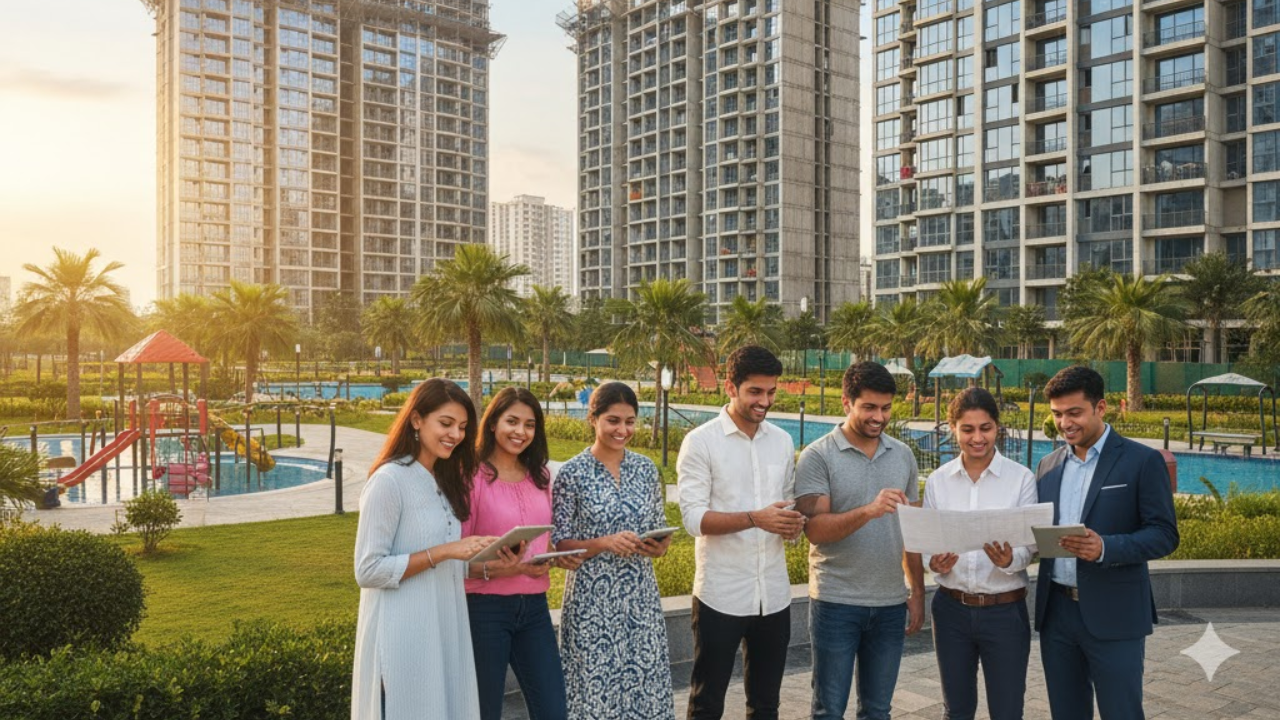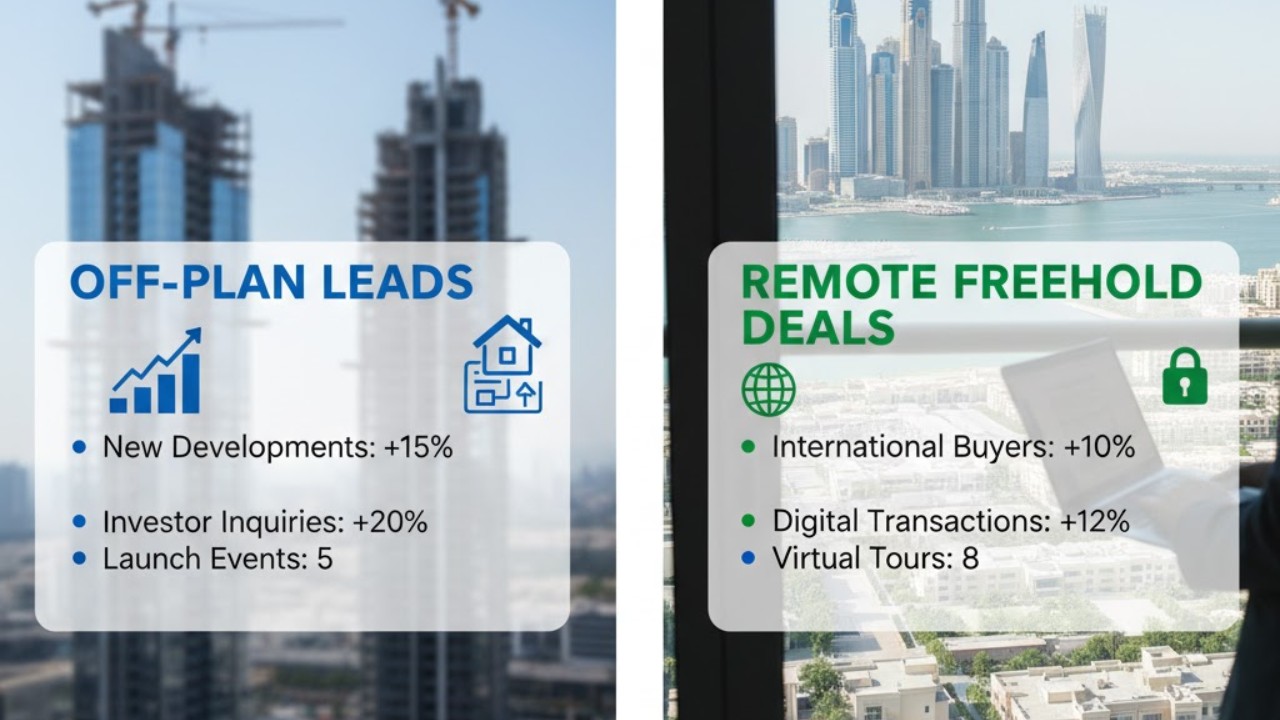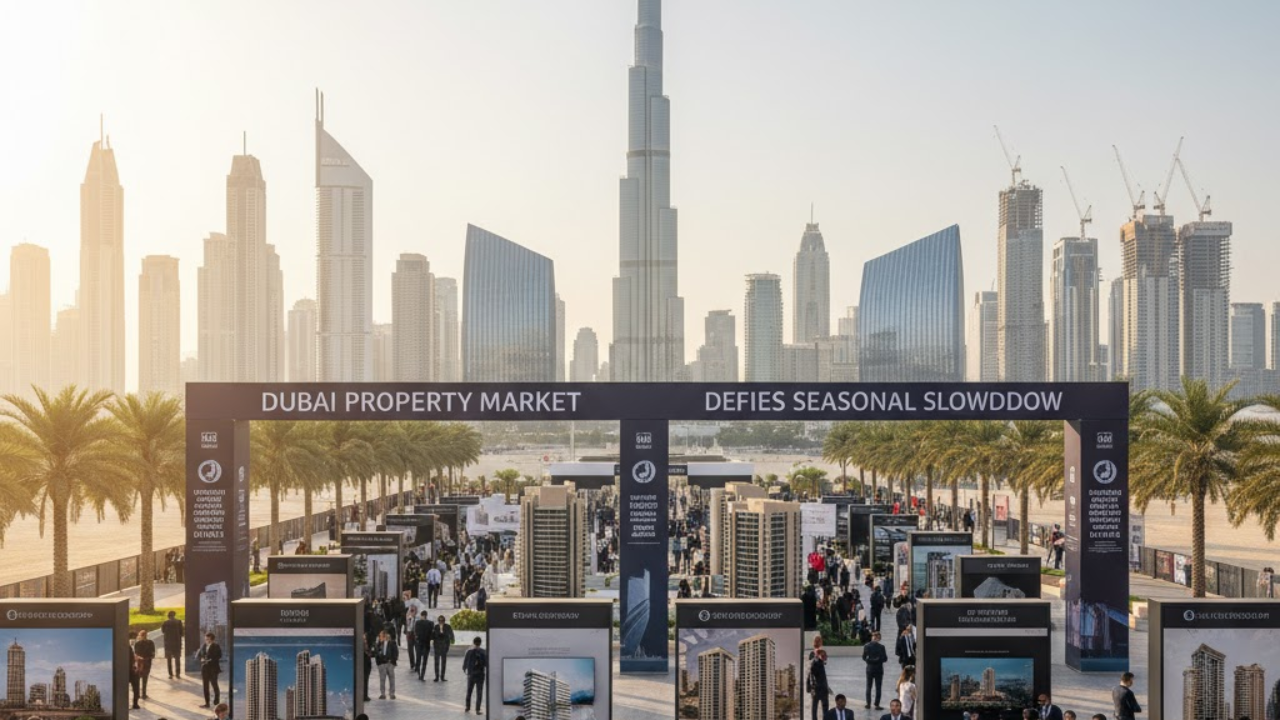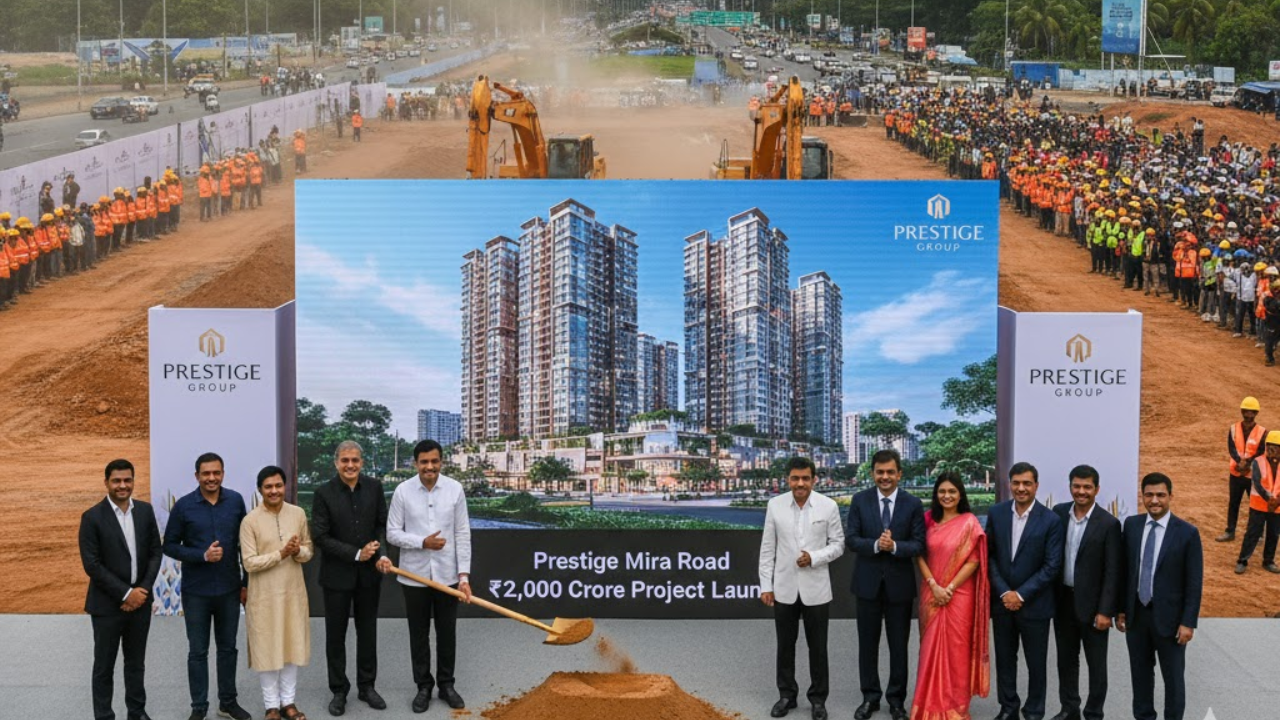
Post by : Naveen Mittal
After a period of slowed momentum, India’s housing market is showing signs of rejuvenation. Recent data reveals that homebuyer confidence is rebounding, despite lingering challenges such as high interest rates, inflation, and elevated property prices. The Housing Sentiment Index (HSI) has surged to 142 in the July–September 2025 quarter, signaling renewed optimism among buyers.
This revival is not just about sentiment — it is manifesting in changing buyer preferences, shifting demand segments, and renewed developer interest across cities large and small. In this article, we examine the drivers behind this rebound, dissect the trends shaping the recovery, compare regional narratives, and discuss what lies ahead for India’s real estate sector.
The Housing Sentiment Index (HSI) is a metric published by real estate platforms (e.g., Magicbricks) to measure buyer sentiment in the housing market, factoring in expectations, current conditions, affordability, and demand. A reading above 100 typically indicates optimism, while a fall below signals caution.
In Q3 2025 (July–September), the HSI rose to 142, up from 138 in the previous quarter. This suggests that buyers are shifting from a cautious stance to a more positive outlook on property investment, even in the face of macroeconomic headwinds.
Key aspects of the rebound include:
Mid-segment homes leading sentiment
Homes priced between ₹1 crore and ₹1.5 crore registered the highest sentiment score among buyers.
Preference for compact flats and builder floors
Smaller, efficient living units are seeing higher appeal as buyers aim to balance cost, maintenance, and delivery timelines.
Growth in demand beyond major metros
Emerging corridors and satellite areas are witnessing stronger-than-expected interest as homebuyers seek better value outside crowded city centers.
While the property market has faced cost pressures from inflation and rising construction costs, many developers have held pricing steady to maintain sales volume. This restraint, combined with expectation of moderate interest rate cuts in the future, has given buyers some breathing space.
Moreover, awareness among buyers that property is a long-term store of value (especially in a rising inflation environment) is nudging many to act sooner rather than wait indefinitely.
Buyers are gravitating toward the mid-segment bracket (₹1 – ₹1.5 crore), where they believe returns are more dependable and value is reasonable. This segment’s sentiment score is especially strong, suggesting buyers see it as a “sweet spot” between affordability and premium features.
This shift is significant because traditionally, new launches have often skewed either toward very affordable units or ultra-luxury projects, leaving a gap in the mid-market. Developers are now responding by tailoring product offerings, amenities, and financing structures accordingly.
As core city areas become saturated or expensive, buyers are increasingly looking at emerging corridors, peripheral zones, and suburbs. These locations offer:
Lower land cost
Better future infrastructure connectivity
The possibility of capital appreciation as the city expands
More manageable ticket sizes relative to prime localities
This trend is helping spread demand beyond the traditional metros and creating new growth hubs in Tier-2 and Tier-3 cities.
Demand is rising for compact flats (1–2 BHK), efficient layouts, and semi-furnished units that are quick to occupy and require less maintenance. Buyers show increasing sensitivity to size, cost, and delivery risk.
Builder floors are also gaining attention over raw plots, given that delivering a completed unit provides more certainty.
Most homebuyers now expect property values to rise by 6–10 % over the coming year. This belief acts as a self-fulfilling catalyst for purchase decisions. Combined with stabilizing macro factors, many see real estate as a safer, long-term hedge against inflation.
Chennai topped the HSI rankings in Q3, signaling strong demand from South India buyers.
Noida / Greater Noida and Kolkata also feature prominently, driven by infrastructure investment and spillover from Delhi/NCR.
Mumbai continues to maintain high sales volumes and rent growth, reinforcing its dominance as a key real estate market.
Meanwhile, Pune, Bengaluru, and Hyderabad continue to attract sizable buyer interest due to their IT-driven economies, infrastructure expansion, and relative affordability compared to coastal metros.
Cities beyond the major metros are emerging as attractive destinations:
Ahmedabad saw a modest ~1 % year-to-date growth in housing sales, with developers gradually launching new projects in peripheral localities.
Some Tier-2 cities are witnessing developer attention in local infrastructure, transit, and regional connectivity, making local property markets more vibrant.
Not all markets are behaving uniformly:
In some cities where land supply is constrained or regulatory clearances cumbersome, buyers remain cautious.
Excessive speculative launches in certain micro-markets may lead to inventory overhang if demand softens.
Local economic fluctuations (job markets, industrial growth) can influence demand more sharply outside the core metros.
Developers are recalibrating:
Focusing more on mid-segment launches aligned with buyer sentiment.
Offering flexible payment plans, early delivery guarantees, and smaller unit options.
Prioritizing launches in emerging corridors rather than saturated city centers.
Deploying digital sales channels and marketing efficiencies to reduce customer acquisition costs.
Rebounding buyer sentiment could draw renewed interest from institutional investors, REITs, and private equity in real estate assets. Developers could tap these sources for capital infusion, reducing dependence on debt funding.
As buying activity picks up, prices — particularly in well-connected areas — may see upward movement. Regions with infrastructure developments (metro lines, expressways, transit corridors) are likely to benefit first.
However, price growth will likely be moderate and measured, to avoid destabilizing the fragile affordability balance for many buyers.
It’s useful to compare how India’s housing sentiment rebound aligns with trends in Dubai’s property market, which has recently posted strong growth despite seasonal challenges.
In Dubai’s Q3 2025, residential transactions rose ~22.7 % year-on-year, and commercial deals grew ~31 %. (Dubai’s property market defied summer slowdown)
The Dubai residential market recorded 55,280 transactions valued at AED 138 billion, representing 18 % annual growth. Off-plan deals accounted for ~70 % of all property sales.
The strong mid-market and luxury segments continue to anchor investor interest, with luxury home deals and high-end villas showing robust traction.
These metrics suggest that property markets with strong fundamentals, global appeal, and institutional backing can sustain growth even in traditionally slow quarters.
Demand for mid-segment and mid-sized units is a common denominator in both markets.
Off-plan and new-launch projects remain a key driver, offering flexible payment structures and growth potential.
Markets that manage supply, maintain regulatory transparency, and invest in infrastructure connectivity tend to outperform.
India, too, can harness this playbook: if developers maintain execution discipline, align with buyer sentiment, and deploy in well-connected corridors, the recovery can be sustained.
While the rebound is promising, several risks could undo the momentum:
Interest rate volatility
Any aggressive upward shift in rates could again pinch EMIs and dampen sentiment.
Affordability constraints
For many buyers, particularly first-time or middle-income segments, rising input costs (steel, cement, labor) and inflation could make new purchases unviable.
Delayed project deliveries & trust deficit
If developers miss delivery timelines or fail to deliver promised amenities, that may erode buyer confidence quickly.
Over-leveraging by developers
Rapid new launches without adequate absorption could lead to financial stress and inventory pile-ups.
Macro or regulatory shocks
Policy changes (such as tax, land, or financing rules), economic slowdown, or liquidity shocks could unsettle the recovery.
HSI trend: Buyer sentiment may fluctuate between 140–150 in the near term, provided macro conditions remain stable.
Transaction growth: Year-on-year growth of 10–15 % is plausible across key markets, especially in mid-segment urban areas.
Product mix: Expect more launches in the ₹75 lakh to ₹1.5 crore bracket and 1–2 BHKs, with builder floors and compact apartments seeing higher share.
Geographic expansion: Many developers may increasingly target emerging corridors and Tier-2 cities rather than deepening saturation in core metros.
Institutional capital inflows: As sentiment improves, developers might partner with REITs or private equity to fund new projects with less debt.
The rebound in buyer confidence, as reflected in HSI rising to 142, signals renewed optimism in India’s housing market.
The mid-segment bracket (₹1–1.5 crore) is driving this revival, supported by stable pricing, better product alignment, and improving sentiment.
Buyers are shifting focus to compact, efficient units and homes in emerging corridors where value is stronger.
Developers are recalibrating their strategies to align with market demand, while institutional investors may re-enter the real estate space.
Risks remain — interest rate shifts, affordability pressures, delivery delays — but the fundamentals appear better aligned for sustained recovery.
This rebound is not just a bounce; it may represent the start of a deeper structural realignment in India’s housing market, where sentiment, product mix, and geography interact more dynamically than ever.
Disclaimer
This article is for informational and educational purposes only and should not be construed as financial, investment, or legal advice. Readers should conduct independent research and consult qualified professionals before making real estate or investment decisions.

Dubai Weekly Real Estate Snapshot: Off-Plan Leads, Remote Freehold Transactions
Dubai’s Week 41 sees AED 9.82 bn in property deals; 61.3% off-plan; new rule allows remote freehold

Dubai Becomes 2nd Most Sought After Residency for HNWIs
Dubai climbs as the 2nd most inquired-about residency among HNWIs, driven by Golden Visa, tax perks,

Lodha Gains Global Trust Recognition in Real Estate
Lodha is the only Indian real estate firm named among Newsweek’s 2025 “World’s Most Trustworthy Comp

Dubai Unveils “Dubai Live” — Real-Time AI Urban Command Hub
Dubai introduces “Dubai Live,” an AI-powered urban command hub that integrates real-time city servic

Dubai’s Real Estate Market Defies Seasonal Slowdown: Q3 2025 Surge
Dubai real estate bucks summer lull with 22.7% rise in residential sales and 31% surge in commercial

Prestige Unveils ₹2,000 Crore Residential Project in Mira Road, Mumbai
Prestige Group unveils “Prestige Garden Trails” in Mira Road with GDV ₹2,000 cr, 1,324 units, strong

India Climbing the Ranks: Sixth Globally in Branded Residences
India now ranks sixth globally in live branded residence projects, capturing 4% of global supply as

From Marathon to Mallathon Dubai’s Fitness Events Unite the City
Dubai’s marathons Mallathons and beach yoga turn streets malls and beaches into vibrant fitness hubs

Dubai’s Wellness Revolution Anti Aging Clinics and Luxury Longevity Retreats for the Elite
Discover how Dubai attracts wealthy travelers with luxury anti aging clinics longevity retreats and

Beyond Bling Dubai Designers Lead a Sustainable and Modest Fashion Revolution
Discover how Dubai’s new designers blend sustainability luxury and modesty creating a fresh eco frie

6 Easy Diet Tips to Fulfill Your Daily Protein Requirements Naturally
Discover 6 simple and effective diet tips to meet your daily protein needs naturally for better stre

7 Vegetarian Foods That Naturally Boost Muscle Growth & Strength
Discover 7 vegetarian foods packed with protein and nutrients to boost muscle growth strength and re

5 Delicious Protein Packed Lunch Box Recipes for Kids You Must Try
Try these 5 protein rich lunch box recipes for kids Healthy tasty and easy meals to keep your childr

Rice vs Pasta Discover Which Carb Rich Food is Healthier for Yo
Compare rice and pasta to find which carb rich food is healthier with benefits drawbacks and tips fo

Sherry Singh India’s First Mrs Universe 2025 Winner
Sherry Singh makes history as India’s first Mrs Universe 2025 inspiring women worldwide with her str